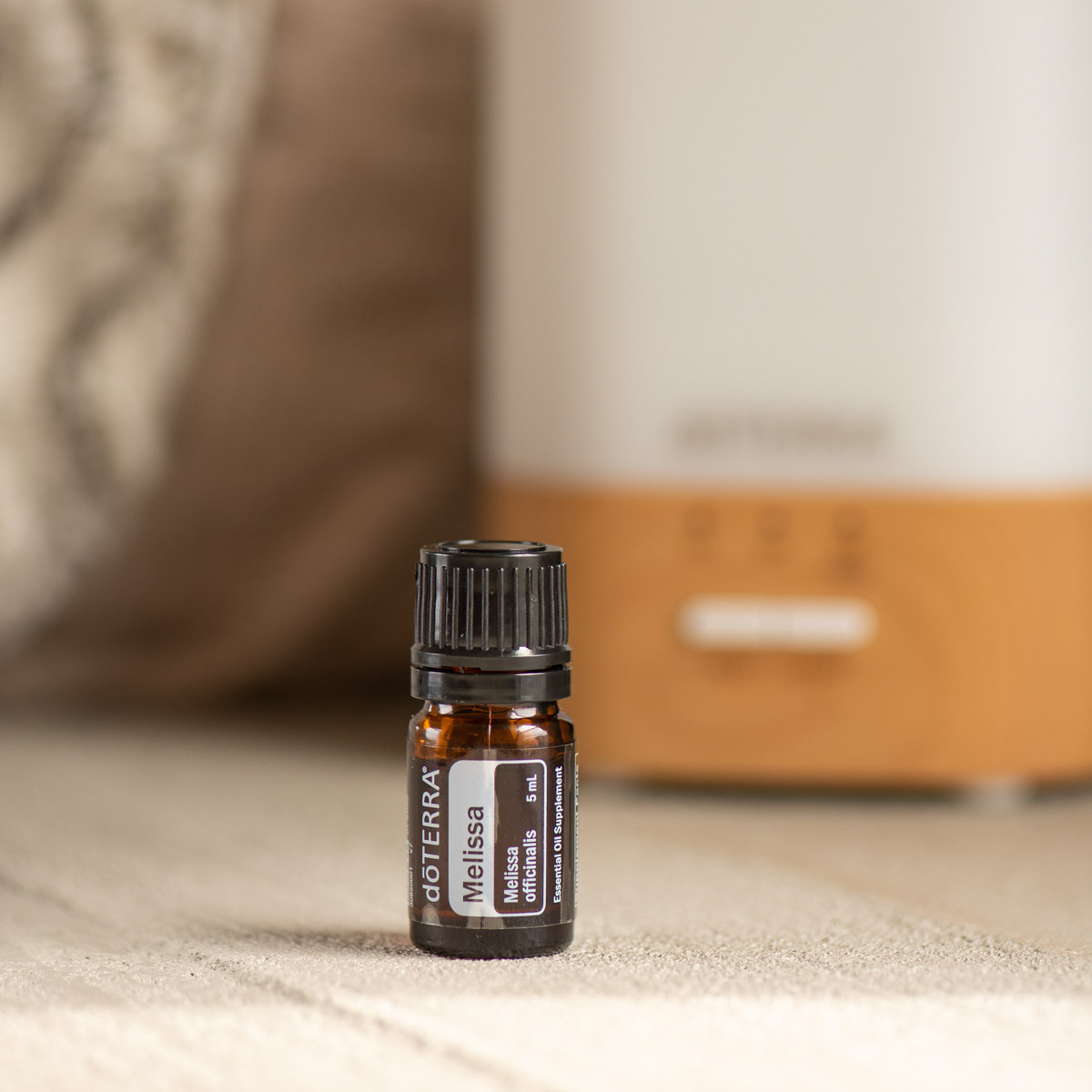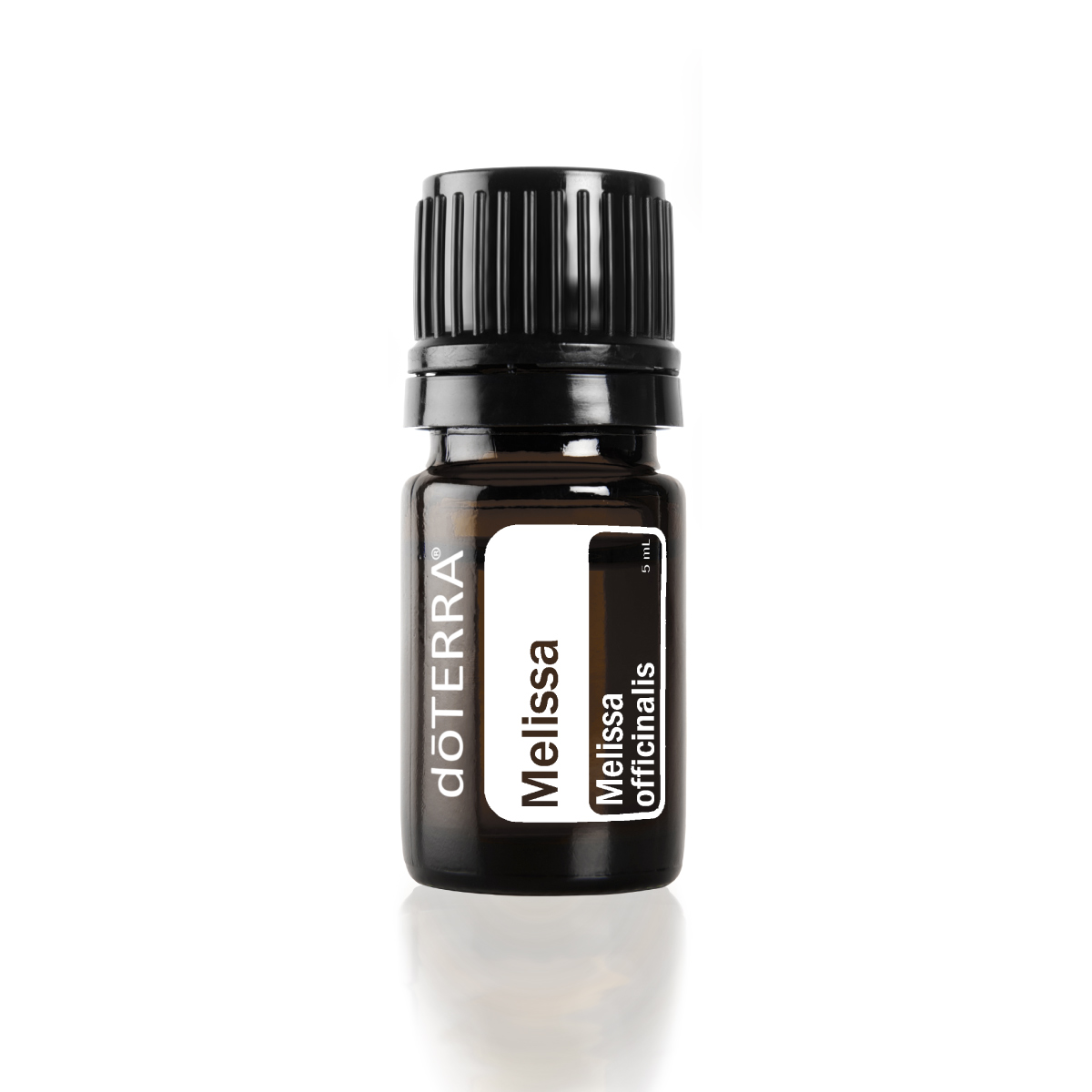Origin: a Latin derivative
meaning "Gift of the Earth."
- Shop
-
Our Story
- View Our Story Home
- Who We Are. . . .
- What We Do. . . .
- Why We Do It. . . .
-
dōTERRA[doh-teh-ruh]
Melissa Oil Uses and Benefits
Essential Oil Spotlight
Essential Oil Spotlight


Melissa Oil Product Description
With a sweet lemon fragrance, the Melissa plant, also known as Melissa officinalis or lemon balm, is the herbaceous origin of Melissa essential oil. This rare oil is extracted from the leaf of the Melissa plant and is cherished by many for its large array of uses and benefits. Melissa essential oil contains strong soothing properties. When used aromatically or topically, it can help promote feelings of relaxation and can assist in calming tension and nerves. Melissa oil is also valued for its fresh, sweet, and citrus-like aroma. In the kitchen, Melissa oil can be used to flavor a variety of different foods and drinks such as teas, ice cream, and some fish dishes. Taking Melissa oil internally may help support a healthy immune system.*
Where to Buy Melissa Oil
Essential oils contain many health-promoting benefits that can improve lives and assist in individual needs; however, in order to obtain the full benefits that each essential oil has to offer, an essential oil needs to be pure. Unfortunately, many essential oils available to purchase are not pure and contain contaminants and fillers that reduce the effectivity of an essential oil. Because doTERRA has seen the power and effect that pure oils can have on individuals and families, they have made it their mission to provide a pure grade of quality essential oils. To ensure purity of these essential oils, doTERRA places each batch of their oils through the CPTG Certified Pure Tested Grade™ protocol. This protocol consists of a series of rigorous tests that assess the purity of each batch of oils. If essential oils have been tested and found pure, the oils are then sold so that people across the globe can experience the powerful effects of pure essential oils.
Melissa Oil Uses and Benefits
- One of Melissa oil’s most prominent health benefits is that it may help support a healthy immune system.* To obtain this powerful bodily assistance, dilute one drop of Melissa essential oil into 4 fl. oz. of liquid and drink.* You can also take Melissa essential oil internally by putting Melissa oil into a veggie capsule and ingesting it like a dietary supplement.
- Two of the main chemical constituents of Melissa essential oil are geranial and neral. These two chemicals contain soothing properties that make this essential oil a perfect oil for relaxation. For optimal relaxation, apply Melissa oil topically or put a few drops of Melissa oil into a diffuser.
- Don’t let nerves ruin your big moment. Before a nerve-wracking speech, presentation, or performance, apply one to two drops of Melissa essential oil to the palms of your hands and cup your hands over your nose and inhale. Melissa oil is great for calming tension and nerves and will prove to be a powerful aid during those anxious occasions.
- Give your skin an invigorating boost by applying Melissa essential oil. Add Melissa oil to your moisturizer or to a spray bottle with water and spritz your face. This simple essential oil addition will give your skin a rejuvenated feeling and will help refresh the mind.
- After a long day, let your mind and body relax and unwind with a little help from Melissa essential oil. For relieving results, rub Melissa oil on your forehead, shoulders, or chest. Applying Melissa essential oil will help lessen feelings of stress and promote emotional well-being.
- One of the most important things you can do to support your body’s health is to get a full night’s sleep. Aside from nutrition, sleep is the fuel that gives your body the strength to work and play. To help create a relaxing environment that encourages a restful night’s sleep, diffuse Melissa oil in your diffuser before going to bed.
- For possible support your body’s immune system, place one to two drops of Melissa essential oil under the tongue or on the roof of the mouth and then swallow.* Directly placing an appropriate quantity of Melissa essential oil into your mouth is an easy and quick way to receive the internal benefits of Melissa oil.*


Fun Fact
Melissa is Greek for “honey bee,” and its sweet, citrus fragrance was known to attract bees.
Plant Description
The Melissa plant, Melissa officinalis, is an herbaceous perennial that is commonly known as the lemon balm. This plant ranges from one and a half to two feet in height. The medium-green leaves of the plant are wrinkled and ovate in shape. The leaves of the plant are edible. During the summer, small, white flowers are found in the leaf axils.1 doTERRA Melissa essential oil is extracted from the leaf of the plant.
Chemistry of Melissa Oil
Main Chemical Components: Geranial, germacrene, neral, β-caryophyllene
Two of the main chemical components of Melissa essential oil are geranial and neral. These two chemical constituents have a monoterpene backbone and are part of the aldehydes functional group. Both geranial and neral contain soothing properties that strongly contribute to Melissa essential oil’s soothing abilities. To learn more about the chemical components of Melissa essential oil or other essential oils, visit the doTERRA Science Blog.
Oils that Blend Well with Melissa Oil
Melissa essential oil blends well with citrus oils as well as doTERRA On Guard®, Geranium, Lavender, Rose, Basil, and Frankincense essential oils for diffusion.
Cautions
Possible skin sensitivity. Keep out of reach of children. If you are pregnant, nursing, or under a doctor’s care, consult your physician. Avoid contact with eyes, inner ears, and sensitive areas.
Video disabled by your privacy settings
-
Copied to clipboard
- Download


